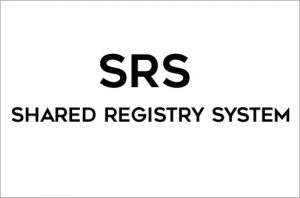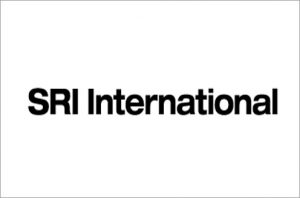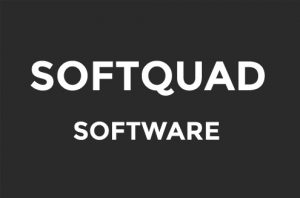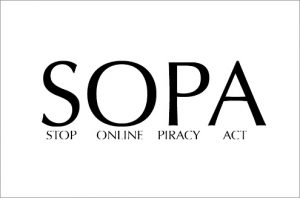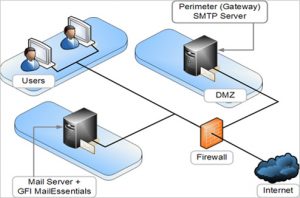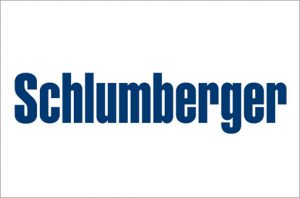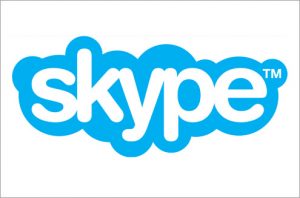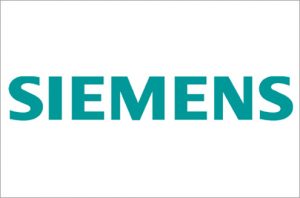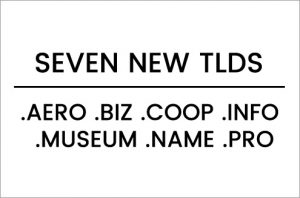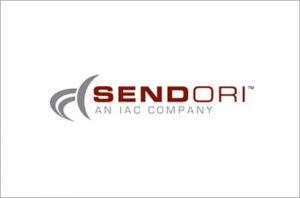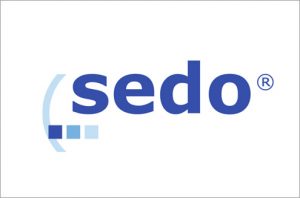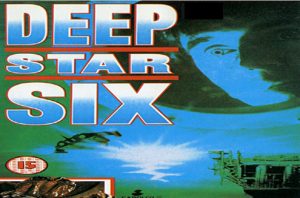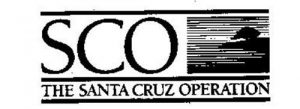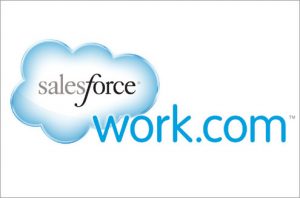On May 20, 1987, Schlumberger Limited registered the slb.com domain name, making it 75th .com domain ever to be registered.
Schlumberger Limited is the world’s largest oilfield services company. Schlumberger employs approximately 100,000 people representing more than 140 nationalities working in more than 85 countries. Schlumberger has four principal executive offices located in Paris, Houston, London, and the Hague. Schlumberger is incorporated in Willemstad, Curaçao as Schlumberger N.V. and trades on the New York Stock Exchange, Euronext Paris, the London Stock Exchange, and SIX Swiss Exchange. Schlumberger is a Fortune 500 company, ranked 287 in 2016, and also listed in Forbes Global 2000, ranked 176 in 2016.
Company History:
As oil is explored for and developed all around the world, so is Schlumberger Limited providing a range of oilfield services and products spanning the entire reservoir life cycle. Among these activities are seismic surveying (through the 70-percent-Schlumberger-owned WesternGeco joint venture with Baker Hughes Incorporated), wireline logging (a company invention dating from 1927), directional drilling, measurements while drilling, well services from construction through completion, and integrated project management. Through 28 service regions, the firm’s oilfield services operations serve customers in 100 countries. Nearly 70 percent, or $9.35 billion, of the company’s 2002 revenues were generated by these services. Beyond these operations, Schlumberger (pronounced shlum-ber-jay) in the early 2000s also operated SchlumbergerSema, a unit that provided information technology consulting, systems integration, and network and infrastructure services to the energy and other industries. The company, however, announced in September 2003 that it would sell the bulk of this unit to Atos Origin SA. Also designated for divestment is a unit called Axalto, which specializes in smart cards and point-of-sale terminals.
Founding an “Electrical Prospecting” Firm in 1919
Schlumberger was the creation of two brothers of that name, Conrad, born in 1878, and Marcel, younger by six years. Rooted in the Alsace region of France, the Schlumberger family had made its mark in both politics and business; the Schlumberger brothers’ great-grandfather served as prime minister under Louis Philippe (the king of France from 1830 to 1848) and their father, Paul Schlumberger, later amassed a fortune in the textile industry. Conrad Schlumberger early displayed a genius for science and, by 1907, had become a professor of physics at the École des Mines, while his brother Marcel pursued mechanical engineering and business. Conrad became interested in the electrical resistance generated by different types of rock formation and was soon testing his results on the family’s summer estate in Normandy. In 1914 Conrad successfully completed the first commercial application of this technique, locating a body of copper ore for a client in Serbia. World War I brought all experimentation to a halt, but in 1919 Conrad and Marcel Schlumberger set up a modest business in Paris to pursue the further evolution of electrical prospecting, as it was called.
At this point the brothers received crucial financial backing from their father, who made it clear that he considered their work a type of scientific inquiry, and only secondarily a means to monetary rewards. This scientific bias has remained strong at Schlumberger, which has always depended on its technological superiority. Bolstered by this aid, which eventually reached FFr 500,000, Conrad resigned from his teaching position in 1923 to devote his energy to the new company, which was named Société de Prospection électrique in 1926. Also in 1923, the brothers received their first order from an oil company, resulting in the successful mapping of an oil-rich salt dome in Romania.
A few years later the Pechelbronn Oil Company of France asked the Schlumbergers to make such measurements not from ground level, but from the interior of an already drilled borehole. Conrad asked Henri Doll, his son-in-law and longtime technical supervisor, to design the necessary equipment, and in September 1927 the men compiled the first “wireline log” by lowering an electrical recording device down a Pechelbronn oil well and measuring the resistance every few feet. The results were accurate, meaning that oil deposits could now be located and measured without resorting to expensive and time-consuming mechanical coring.
The world did not immediately beat a path to the Schlumberger door, however. By the time logging teams had been sent to Venezuela, the United States, and the Soviet Union, the Great Depression had taken hold, and drilling activity had come to a virtual halt. The Venezuelan tests went so well that Royal Dutch Shell became interested and ordered additional work to be done in Romania, Sumatra, and Trinidad. Furthermore, the Soviet Union proceeded with its drilling in the Baku oil fields regardless of the Depression, and there the Schlumbergers landed sufficient orders to get them through the first lean years. An ardent socialist, Conrad Schlumberger was pleased to do business in Soviet Russia.
Successfully Expanding into U.S. Market in 1932
The young company’s biggest break came with its introduction to the U.S. market in 1932, when Shell asked it to run logs in California and on the Texas gulf coast. These again proved successful and Schlumberger was soon picking up business among the many wildcatters in Texas and Oklahoma. In 1934 the brothers founded Schlumberger Well Surveying Corporation in Houston, Texas, to meet the growing demand for their services, and this U.S. division soon became the largest and most profitable of the parent company’s worldwide businesses.
Once underway, Schlumberger expanded rapidly, despite the Depression. The brothers had a long technological lead on any would-be competitors, an advantage the company has maintained to this day by consistently hiring top engineering talent and spending liberally on research and development. In addition, Schlumberger remained very much a family organization, with the resulting high degree of trust and unity helping to keep employees motivated and loyal. This became of greater importance after the death, in 1936, of Conrad Schlumberger. Marcel Schlumberger assumed control of a burgeoning business, which was already doing more than 1,000 logs a month in North America alone, but he soon had help from other members of the extended family.
As world depression gave way to World War II and France was overcome by Germany, Marcel Schlumberger worked with Jean de Ménil to move the corporation from Paris to Trinidad. De Ménil, the husband of Conrad Schlumberger’s daughter Dominique, was a banker who became head of Schlumberger’s financial affairs in 1939. De Ménil is generally credited with managing the move to Trinidad. De Ménil remained overseas and eventually became head of Schlumberger’s South American and Middle Eastern businesses, operating out of the Houston office.
Although information is sparse, it is clear that the war was not good for Schlumberger’s business. It was necessary to retreat before the Nazi advance, and the war effectively scattered key members of the Schlumberger family. Doll, the company’s top technician, fled to Connecticut, where he formed a company called Electro-Mechanical Research that went on to do important work for the Allied war effort. Schlumberger eventually bought out Electro-Mechanical, and Doll emerged as the head of all technical research for Schlumberger worldwide. On the other side of the Atlantic Ocean, Marcel’s son-in-law René Seydoux spent two years as a German prisoner of war before assuming control of all European operations. In Houston Pierre Schlumberger, Marcel’s son and the only male heir of either of the founders, began to rebuild the U.S. business in 1946 and guided it back to a position of leadership.
Thus fragmented by war, the Schlumberger family was held together largely by Marcel, whose devotion to the business became legendary. In 1940, when it was clear that France would soon fall and many thought that the Schlumbergers would be ruined, Marcel Schlumberger was offered $10 million for his business by the head of rival Halliburton Oil. It is said that Marcel did not even respond to the suggestion, but instead showed his guest to the door.
When Marcel Schlumberger died in 1953, the remaining Schlumbergers were unable to decide on a successor. The firm was left divided, roughly between Doll, who controlled technical research; de Ménil, who controlled the business in South America and the Middle East; Seydoux, who controlled the company’s European business; and Pierre Schlumberger, who ran the company’s U.S. operations.
Incorporated in the Netherlands Antilles in 1956
Pierre Schlumberger, the natural candidate to follow his father as president, strongly favored incorporating the company and selling stock to raise capital needed to take advantage of the booming postwar economy. Other family members resisted the idea, fearing a loss of both control and quality, but in 1956 Schlumberger Limited was formed in Curaçao, Netherlands Antilles. That location was chosen for tax purposes. Pierre became president and Henri Doll was named chairman.
The new corporation was headquartered in Houston. It remained under family control, as it did for many more years, but it began to sell stock, and the fresh capital allowed Schlumberger to expand rapidly at a time when postwar U.S. oil drilling was at its peak. As the undisputed technical leader in the field, Schlumberger charged what it pleased, and when the initial financial statements were made public in 1958 they showed a first year profit of $12.2 million.
The next 25 years may someday be thought of as the company’s golden age. By carefully managing the high profits earned by its wireline business, Schlumberger diversified slowly into a number of related fields, giving each acquisition the time and resources needed to make it healthy. Aside from a pair of French electronics firms, the company’s first significant purchase was the 1959 acquisition of Forages et Exploitations Pétrolières (Forex), a French oil drilling company. A complementary deal was the 1960 formation of Dowell Schlumberger, a joint venture with Dow Chemical to provide oil well completion services such as cementing and flow stimulation. Schlumberger was now a complete oil services company, able to set up drilling operations anywhere in the world.
As oil drilling gradually fell from its 1957 peak, Pierre Schlumberger and his advisers thought it prudent to expand further into the electronics field. This was a natural extension, as Schlumberger had always used sophisticated electrical monitoring devices and was at home in the electronics field. Accordingly, the firm made a major acquisition in 1961 when it swapped stock with Daystrom, a manufacturer of various electronic instruments primarily for military use. With $90 million in sales, Daystrom was nearly as large as Schlumberger ($130 million), but did not turn a profit for several years after. The parent company pursued many other electronics concerns, eventually absorbing 11 French companies and several in England and the United States. Most of the newcomers required years of work before paying dividends; in 1966, for example, 42 percent of Schlumberger’s $343 million in sales was generated by the electronics division, whose operating deficit held down overall corporate profit to $28 million.
After a few wobbly years in the early 1960s, the Schlumberger board of directors decided that Pierre Schlumberger should step down as president. Promoted to his place in 1965 was Jean Riboud, a longtime friend of the Schlumbergers, particularly Marcel. Riboud guided Schlumberger for the next 20 years, during which time the company’s net income and worldwide reputation rose with equal regularity.
Riboud immediately moved corporate headquarters from Houston to New York City and reorganized the now diffuse company on the basis of product lines rather than geography. In 1970 Riboud further diversified the Schlumberger portfolio with the $79 million purchase of Compagnie de Compteurs, an aging French manufacturer of utility meters, which also took a few years to become profitable. By 1980 it had made Schlumberger the largest meter manufacturer in the world and formed the heart of one of the company’s four divisions.
The 1973 OPEC oil embargo spurred a massive worldwide increase in oil exploration and drilling, with Schlumberger positioned to benefit from every new well. Its wireline services helped to find new oil, Forex-Neptune drilled the wells, and Dowell Schlumberger kept them pumping. In the space of five years Schlumberger’s sales jumped from 1972’s $812 million to a robust $2.2 billion in 1977, with profit exceeding $400 million in 1977. Schlumberger earned spectacular profits by delivering a superior and much needed product.
Unwise Acquisitions, Oil Glut Leading to Lower Profits: 1980s
The boom years at Schlumberger reached their peak in 1982. At that time the company had sales of $6.3 billion and profits of $1.35 billion, a staggering 21 percent ratio that made Schlumberger the most profitable of the world’s 1,000 largest corporations. The firm’s hold on the wireline logging business rivaled that of IBM’s in computers, with seven out of every ten logs in the world taken by Schlumberger. Its drilling operation was the world’s largest, and it produced more utility meters than anyone else.
As 1982 drew to an end, however, a close observer would have noticed that Schlumberger’s quarterly profits were slipping, and they continued to do so as a world recession and greater oil conservation combined to put the brakes on oil exploration. In addition, Chairman Riboud had made a tactical mistake, and he was about to make a second. In 1979 Riboud paid $425 million to buy the leading American semiconductor manufacturer, Fairchild Camera and Instrument Corporation. Schlumberger hoped that Fairchild’s technical expertise would help keep it ahead of the pack in its various fields, but the move was a failure from the beginning. Fairchild lost money and drained valuable research and development dollars from the rest of Schlumberger; the parent company was forced to write off much of Fairchild’s assets and sell the rest to National Semiconductor in 1987, at a loss of $220 million.
Schlumberger’s, and Riboud’s, second mistake came in 1985, when it paid $1 billion for SEDCO, another enormous drilling company. Riboud apparently assumed that the oil glut would soon turn around; it did not. Riboud died in 1985 and was succeeded by Michel Vaillaud, who was ousted the following year by the board of directors, during a year that turned out to be the first one in which Schlumberger posted a loss ($1.6 billion) since incorporation. Next in the chairman’s seat came 30-year Schlumberger veteran Euan Baird, a Scottish geophysicist and the first non-Frenchman in history to run the company.
Baird-Led Turnaround, Late 1980s Through Mid-1990s
As the oil glut continued, Baird quickly moved to turn the company around by refocusing on the core oil field services and measurement and systems business groups. In addition to selling Fairchild, other noncore businesses were divested. Schlumberger also underwent a restructuring to cut costs and become more cost-effective to survive in the difficult economic environment. At the same time Baird was creating a leaner Schlumberger, he also invested heavily in research and development to keep the company at the technological forefront. From 1987 into the early 1990s, research and development spending was 37 percent higher than before Baird took over. The result was successful innovations, such as EB-Clean and Maxis.
EB-Clean, introduced in 1990, was an additive used in a well bore to enlarge cracks. After it drained away, more oil and gas was able to flow through the now larger cracks. The additive was developed by the joint venture Dowell Schlumberger, which Schlumberger later owned outright when it bought Dow’s half-interest in 1993 for $800 million in cash and warrants.
Maxis, also developed in the early 1990s, was a premium imaging system that provided much clearer, more detailed, and faster evaluations of potential well sites than previous systems had done. When rival Western Atlas introduced a competitive system, Schlumberger was ready with a new Maxis Express unit that was smaller and 50 percent cheaper to operate.
In addition to new product development, Baird also actively sought out acquisitions to enhance Schlumberger’s oil field services core. Soon after becoming chairman, Baird moved the company into a new area of oil field services, seismic data, which involved using and measuring sound waves bounced off the earth’s surface to search for oil-bearing formations. In 1986 a 50 percent interest in the Norwegian firm GECO, one of the world’s top seismic companies, was acquired; the remaining 50 percent was bought two years later. In 1991 Schlumberger acquired 51 percent of Prakla Seismos, a leader in onshore seismic operations, from the German government. In 1992 Seismograph Service Limited was purchased from Raytheon Company. The following year, Schlumberger purchased the remaining 49 percent of Prakla. All of the company’s seismic operations were then combined within a Geco-Prakla division. The seismic area proved to be highly competitive and not immediately profitable, but by 1995 Schlumberger’s focus on improvements to seismic technology had begun to pay off.
Another important acquisition came in 1992 when GeoQuest Systems, Inc. was purchased, also from Raytheon. GeoQuest specialized in computing and information technology services geared to hydrocarbon exploration and production. In late 1994 Schlumberger formed a joint venture, Omnes, with Cable & Wireless plc to provide communications and information technology systems for oil, gas, and other companies with operations in remote areas.
By the mid-1990s, it was increasingly clear that Baird had successfully turned Schlumberger around from that bleak year of 1986. In 1994 and 1995, the company achieved revenue of $6.7 billion and $7.6 billion, respectively, and net income of $536.1 million and $649.2 million, respectively. Schlumberger’s wireline testing services remained the industry’s unchallenged leader, and its growing stable of electronic subsidiaries was helping to keep the company at the forefront of technical innovation.
Acquisitions, Joint Ventures, and Divestments: Late 1990s and Early 2000s
Schlumberger rode the peak of the latest oil industry cyclical upturn to record results in 1997 of $10.65 billion in revenues and profits of $1.3 billion. But in 1998, even though revenues inched slightly higher, profits fell nearly 22 percent as the industry went into another tailspin. Demand for oilfield services declined sharply during the second half of 1998 as a result of the combined effects of the Asian economic crisis, tropical storms, and slumping oil prices. Schlumberger quickly cut costs, axing more than 10,000 workers from the payroll from mid-1998 to mid-1999. The corporation achieved just $366.7 million in net income on revenues of $8.39 billion in 1999.
In the meantime, consolidation in the oil-services field was continuing apace, with Halliburton Company acquiring Dresser Industries, Inc. and Baker Hughes acquiring Western Atlas Inc., both in 1998. Schlumberger engineered a large takeover of its own that year, buying out Camco International Inc. in August in a stock swap valued at $2.2 billion. Schlumberger also assumed $160 million of Camco debt. The purchase of Houston-based Camco, which had 1997 revenues of $913.9 million, filled a hole in Schlumberger’s array of services–the high-end of the oil well completions business, which centered around building wells and readying them for production.
In another industry trend during this period, oil-services firms were forming a variety of joint ventures, and Schlumberger was a player here as well. In July 1999 Schlumberger merged its non-U.S. drilling fluid operations with the M-I unit of Smith International Inc., forming a new M-I joint venture, 40 percent owned by Schlumberger and 60 percent owned by its new partner. In addition to its contribution of assets, Schlumberger also injected $325 million into the venture. Just a couple of weeks after the deal’s completion was announced, however, the U.S. Justice Department filed a petition in a U.S. district court accusing the two companies of a criminal violation of antitrust law. The government alleged that the new joint venture violated a 1994 consent decree that specifically barred Smith from combining M-I with the drilling fluid operations of Schlumberger and several other firms. In December 1999 a federal judge found Schlumberger and Smith guilty of criminal contempt, assessing each a fine of $750,000 and five years of probation. The firms also reached an agreement with the Justice Department whereby they would pay a $13.1 million civil penalty and would be able to continue operating the M-I joint venture. Schlumberger next divested its offshore contract drilling business, Sedco Forex, in December 1999. This unit was first spun off to Schlumberger shareholders and then merged into Transocean Offshore Inc., creating Transocean Sedco Forex Inc. In November 2000 yet another joint venture was created. Schlumberger and Baker Hughes combined their seismic businesses, Geco-Prakla and Western Geophysical, respectively–the two largest seismic firms in the world–into a joint venture called WesternGeco. Schlumberger paid Baker Hughes $500 million as part of the transaction, which resulted in the former company taking a 70 percent stake and the latter a 30 percent stake.
Schlumberger’s focus on technical innovation throughout its history naturally led the firm into the information technology field, and the firm had made some notable achievements, despite having never quite lived down its disastrous purchase of Fairchild. It had been one of the first commercial users of the ARPAnet (the precursor to the Internet) and had presciently registered the domain name slb.com in 1987, years before the World Wide Web had achieved any sort of critical mass. One of Schlumberger’s least-known achievements was its development of smart cards, which grew out of technology that the company had developed for oil wells. A smart card was similar to a credit card but had a computer chip embedded into it and a variety of applications. By the early 2000s they had become quite popular in Europe but were slow to catch on in the United States. Schlumberger bolstered its operations in this area in March 2001 by purchasing the smart-card unit of France’s Groupe Bull S.A. for $313 million. In a much more ambitious foray into information technology, Schlumberger spent $5.19 billion to acquire Sema plc, an Anglo-French systems integration, consulting, and outsourcing firm, in April 2001. Sema’s customers centered around the telecommunications, energy, transportation, and finance sectors. Its operations were integrated with several of Schlumberger’s information technology units to form SchlumbergerSema.
By 2002, however, the Sema acquisition was already being viewed internally as a disappointment and externally as another huge mistake. The collapse of the technology and telecommunications sectors sharply reduced the value of SchlumbergerSema, and under new accounting guidelines related to the impairment of goodwill, Schlumberger was forced to take a charge of $2.64 billion to reflect the lower value of the unit. Additional charges of $587 million were also taken in 2002, most of which were tied to restructurings of SchlumbergerSema and the WesternGeco joint venture. About 1,200 WesternGeco employees lost their jobs as the company closed down the venture’s land-mapping operations amid the start of another drilling downturn. At SchlumbergerSema, meantime, the businesses that revolved around products rather than services–including the smart cards, point-of-sale terminals, and utility meters units–were separated from the unit, which also began to focus more narrowly on services oriented to the global energy industry. This restructuring involved an additional 3,300 job cuts. The charges resulted in a net loss for 2002 of $2.32 billion on revenues of $13.47 billion. In December of that year, Schlumberger sold Reed Hycalog, a maker of drill bits that had been inherited from Camco, to Grant Prideco for $362 million in cash and stock.
In February 2003 Baird resigned and was succeeded as chairman and CEO by Andrew Gould. The new chief, who had headed up the firm’s oilfield services operations from 1999 to 2002 before being named president and chief operating officer, quickly began refocusing Schlumberger on its core business. During 2003 the corporation’s semiconductor-testing and electricity meters businesses were divested, and the smart-card unit was renamed Axalto in preparation for a sale or spinoff during 2004. Most importantly, the company announced in September 2003 that it had reached an agreement to sell most of SchlumbergerSema to Atos Origin SA for EUR 1.3 billion (US$1.5 billion) in cash and shares. Of the retained Sema operations, all except one were slated to be separately divested; the exception, the information technology business focusing on the upstream oil and gas market, was merged into the existing Schlumberger Information Solutions segment, which was already an integral part of the firm’s core oilfield services operations. Once it was able to complete the divestments–and rid itself of what many analysts considered unnecessary distractions–Schlumberger seemed likely to become an even stronger player in the oilfield services sector.
